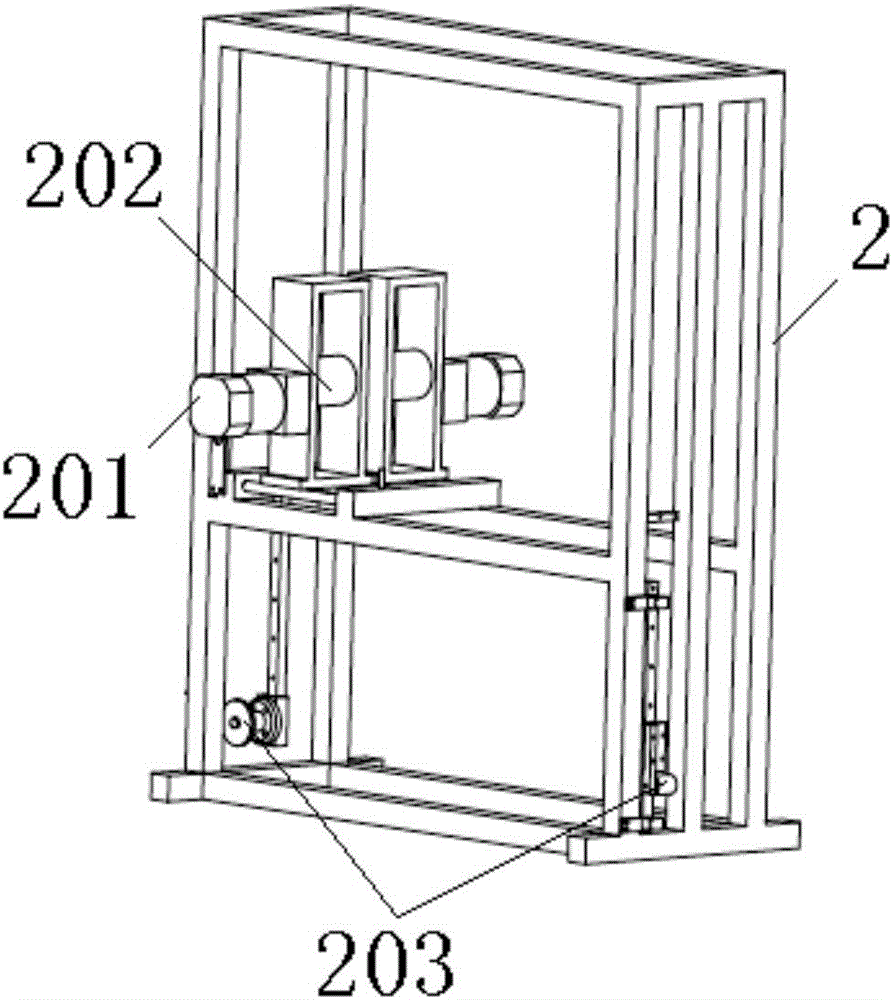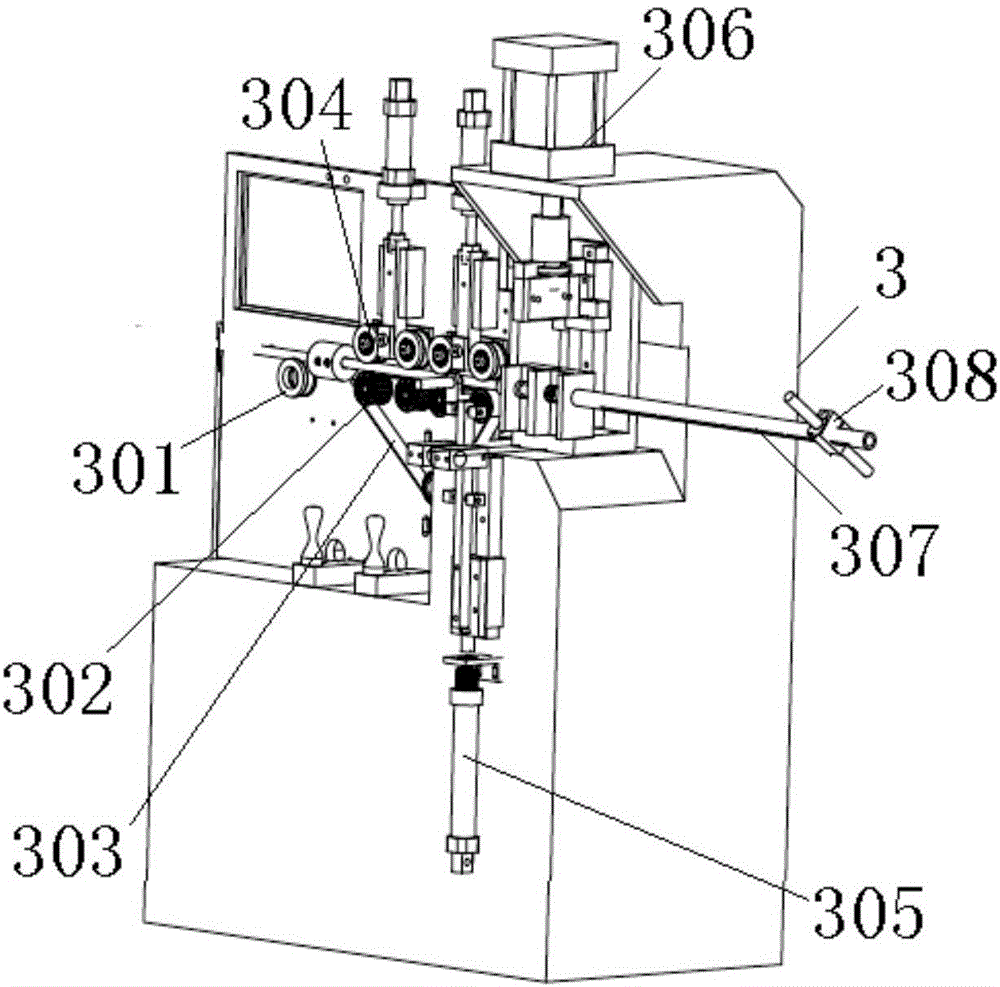Rubber pipe discharging device
A rubber hose and conduit technology, applied in the field of rubber hose feeding device, can solve problems such as difficult to guarantee quality, slow running speed, inaccurate joint detection, etc., and achieve the effect of reasonable structural design, high production efficiency, and not easy to slip
- Summary
- Abstract
- Description
- Claims
- Application Information
AI Technical Summary
Problems solved by technology
Method used
Image
Examples
Embodiment Construction
[0024] The specific implementation manner of the present invention will be described in further detail below by describing the embodiments with reference to the accompanying drawings.
[0025] Such as Figure 1 to Figure 3 As shown, the rubber hose blanking device includes a feeding tray 1 and a material passing frame 2 arranged in sequence, and a rubber hose cutting and blanking machine.
[0026] The rubber hose rolled into a disc is set on the feeding tray 1, and the middle passes through the feeding rack 2. The rubber hose is fed to the rubber hose cutting and unloading machine, and the rubber hose is cut by the rubber hose cutting and unloading machine, and the material is automatically unloaded.
[0027] The feeding tray 1 includes a rotating tray and a bracket, and the bracket is provided with a driving motor 101 for driving the rotating tray to rotate. Among them, the bracket is a triangular frame, and the rotating plate is set at an inclination, which is convenient fo...
PUM
 Login to View More
Login to View More Abstract
Description
Claims
Application Information
 Login to View More
Login to View More - R&D
- Intellectual Property
- Life Sciences
- Materials
- Tech Scout
- Unparalleled Data Quality
- Higher Quality Content
- 60% Fewer Hallucinations
Browse by: Latest US Patents, China's latest patents, Technical Efficacy Thesaurus, Application Domain, Technology Topic, Popular Technical Reports.
© 2025 PatSnap. All rights reserved.Legal|Privacy policy|Modern Slavery Act Transparency Statement|Sitemap|About US| Contact US: help@patsnap.com



